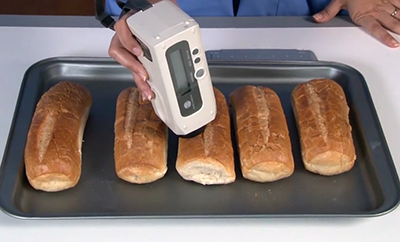Best Practices for Averaging the Color of Your Sample
In statistical averaging, measurements are performed multiple times in various spots on the sample. These values are then averaged together. The resulting values best represent the overall color of that sample or batch. The precision of the measurements, however, depends on how the sample is presented for each measurement and the specifications of the color measurement instrument. Below are tips to maintain consistency for each measurement and get the best representation of a sample’s color.
Measurement Averaging Tips:
- Use a color measurement instrument with the largest aperture size possible. This allows a larger area of the sample to be measured and will provide a better representation of the sample’s color.
- Measure the sample two or more times in various spots to get a good representation of the sample’s color. The number of measurements and location of the measurements depend on the sample size and form.
- For translucent or transparent samples, fold the sample until no light can pass through. It should be folded the same amount of times for each measurement. If the sample cannot be folded, place a standard background behind the sample for each measurement. A background plain in appearance (e.g., white ceramic tile) is recommended so as not to affect measurement results.
- For powders, granules, or other loose samples, refills from the same sample batch are usually required between each measurement reading to maintain consistent conditions.
In addition, for consistency, instrumental specifications should define how the sample is prepared and presented for each measurement reading. A lack of standardization, as well as other factors, can result in errors and noticeable color differences between a sample and standard.
Instrumental specifications to be standardized:
- Instrument model, type, and geometry
- Aperture size
- Standard illuminants
- CIE standard observer
- Viewing angle
- Color space
The methods used to average the color of your sample should be tested and refined, if needed, to identify the ideal method for your application. These specifications and procedures should be documented and shared internally and throughout your supply chain to maintain color consistency, accuracy, and efficiency.
Like this article? Click here to sign up for our monthly Color Trends & Technology newsletter to stay updated on the element of color, best practices for controlling and evaluating the color of objects, educational seminars, and advanced technology for research and manufacturing environments.
The technological leader in color and light measurement solutions, Konica Minolta Sensing Americas helps organizations formulate, evaluate, and control color to meet product quality and operational goals more efficiently.











